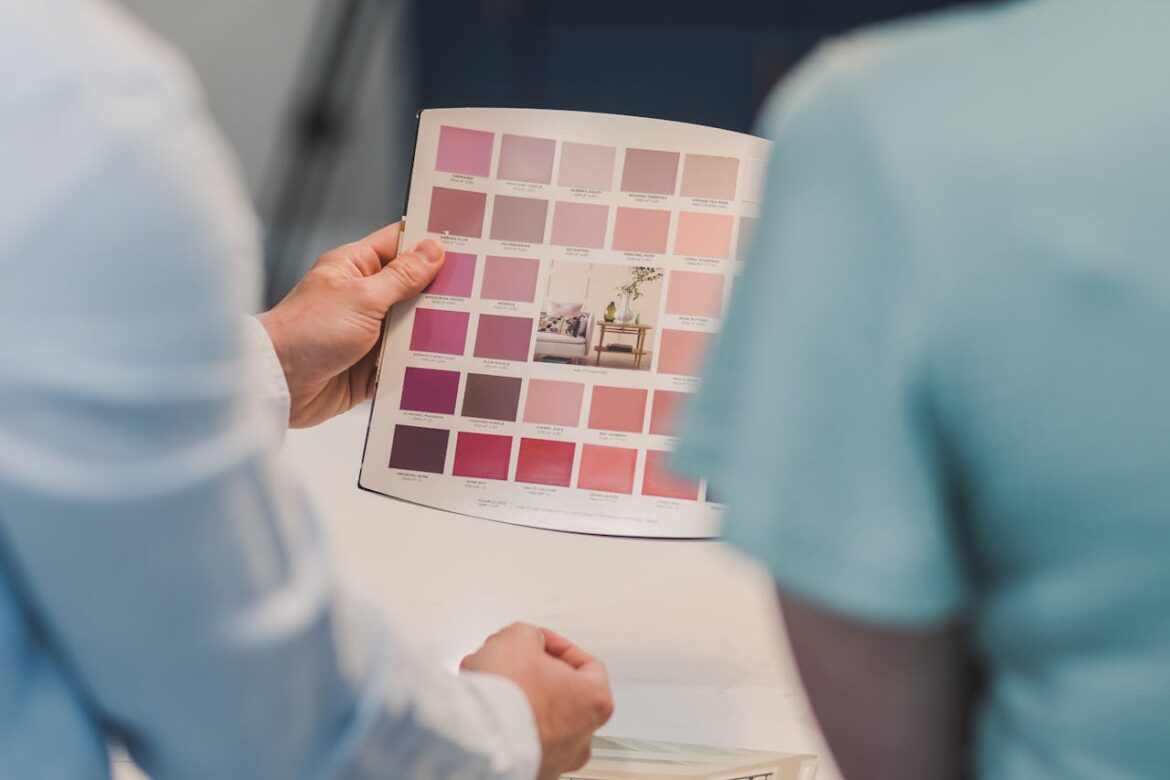Wall colors do more than beautify a room; they express mood, affect perception, and alter behavior. Whether a bedroom sanctuary or an office center, color choices can subconsciously guide how people feel and interact with a space. As businesses and homeowners alike seek to render spaces more meaningful, the psychology of color is not just an aesthetic choice but a strategic one. The following are five key things to know about the impact of color on human psychology and why the selection of the right color is important in both personal and professional settings.
Warm Colors Stimulate Energy and Emotion
Red, orange, and yellow are warm colors. Warm colors express stimulation. They can make the person feel energetic, warm, and excited. Red can raise heart rate and create engagement, which explains partly why it is used in dining rooms and retail floors. Orange creates enthusiasm and conversation. Yellow creates cheer and creativity. However, using too much of the tones or applying them in the “wrong” area can create the opposite effect, that being agitation or discomfort. Moderation is the word here; warm colors work best in complex situations where you want energy and communication to flow.
Cool Colors Promote Calmness and Focus
The cool colors are blues, greens, and purples, and are typically hopeful, calm, clarity, and concentration. Blue, which is typically in bedrooms or offices, has been identified to reduce stress and increase productivity. Green is connected to nature and harmony, hence used in healthcare or education to convey trust and renewal of education. Purple lends itself to thoughtfulness and creativity, especially lighter shades like lavender. Cool colors are best applied in the rooms where thoughtfulness and focused thinking are important. If too dark, however, it can signal depression unless mixed well with lighting.
Neutral Colors and Their Role in Commercial Spaces
In commercial spaces, particularly across Australia, neutral colors such as beige, gray, and off-white are the most prevailing color schemes. These colors offer versatility and a sense of professionalism that is appealing to a broad number of individuals. Neutral colors afford simpler branding, versatility to accommodate various furniture styles, and ease of maintenance in the long run. Neutral walls also avoid sensory overload in high-traffic spaces in busy business areas such as Brisbane. It’s crucial to hire experienced commercial painters from Brisbane to ensure the chosen colors align with the space’s purpose and local aesthetic standards. Their expertise can also prevent the misuse of neutral colors, which, when executed poorly, can be dull or uninteresting.
Psychological Triggers in Color Contrast and Saturation
Color psychology is not just hue; it is also about contrast and saturation. High-contrast settings tend to stimulate alertness and mental effort, such as white walls with dark trim. Thus, high-contrast settings can be appropriate for a task-based setting, such as meeting spaces or study areas. As a result, low-contrast schemes tend to feel comfortable and relaxed, but also moving. Furthermore, saturation was found to be important; saturated colors have more energy, which can energize a space. Conversely, low-saturation colors offer subtlety and calm. By understanding and using contrast and saturation, designers are able to affect emotional responses without changing colors, while still making a space functional and emotionally relevant to its use.
Cultural and Personal Influences on Color Perception
Psychological reactions to color are pretty much universal, but how people perceive color can also be influenced by their cultural background and personal experience. In many cultures, white is associated with purity and peace, but in others, it can mean mourning. In the same vein, personal associations may impact a person’s response to a color, such as memories of a blue bedroom or a green classroom. In choosing colors for walls, artists and designers need to assess subjective experiences to understand the emotional response generated by color. This is especially true in residential and multicultural spaces. Thoughtful color choices respect cultural and emotional differences and can guarantee the desired feeling has a wide reach and will have similar effectiveness.
In summary, color is more than a visual preference; it is a psychological device. The possible emotional and intellectual baggage stems from exciting reds in active settings to calming blues in passive settings, while knowing that congestion and control can manifest in both active and passive spaces. By investigating and applying the principles of color psychology, homeowners and designers can construct spaces that not only look good but feel good, and that is really what painting is about.

Leave a Reply